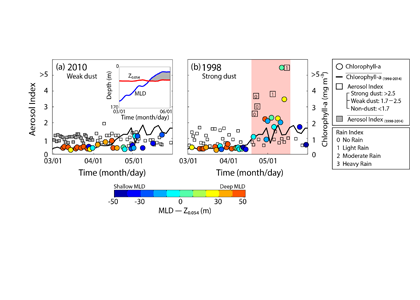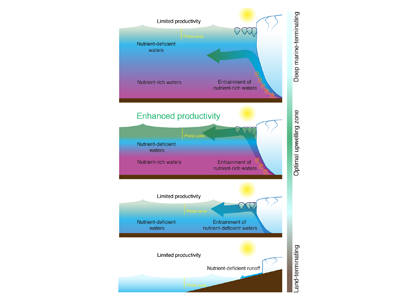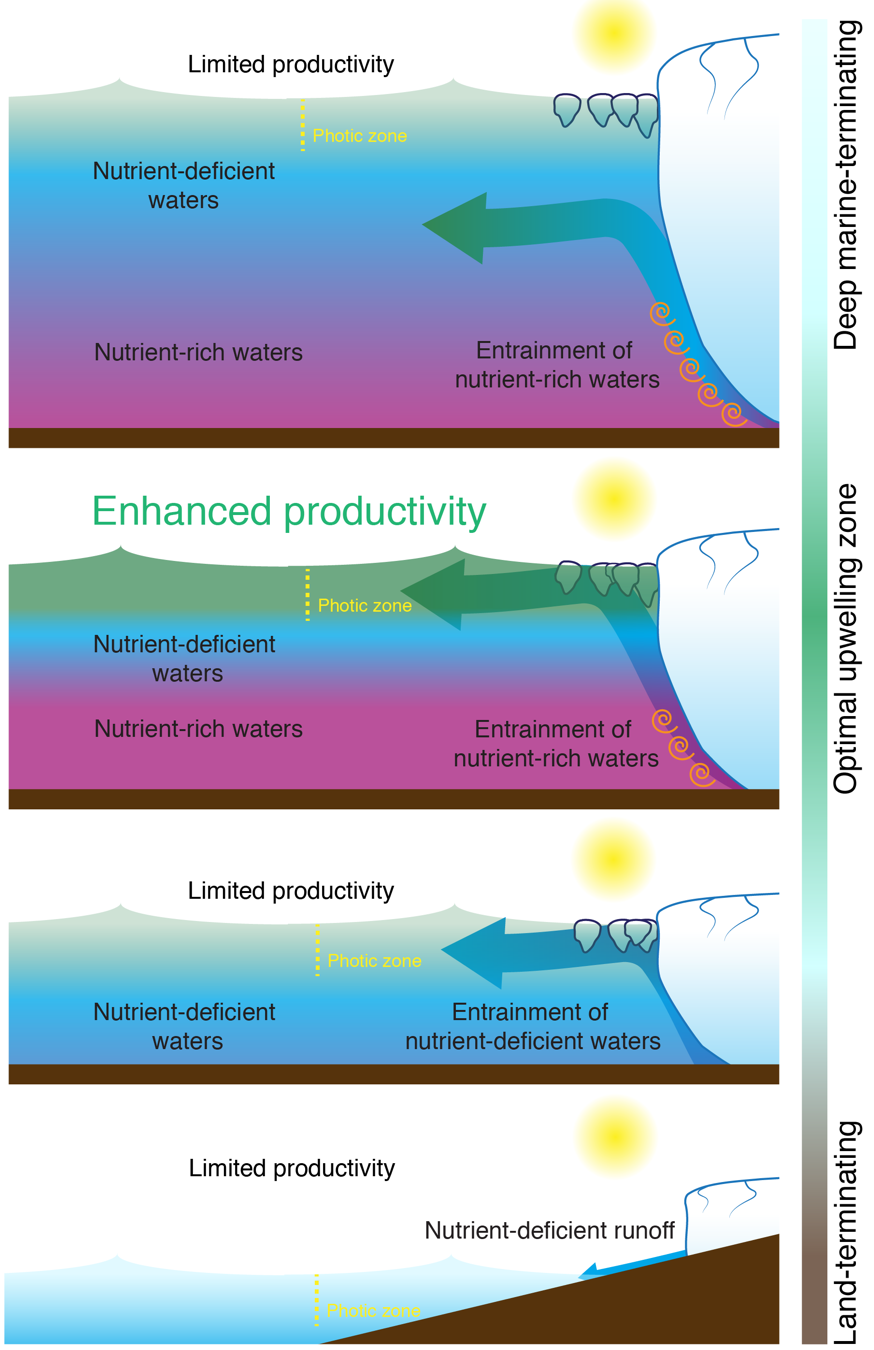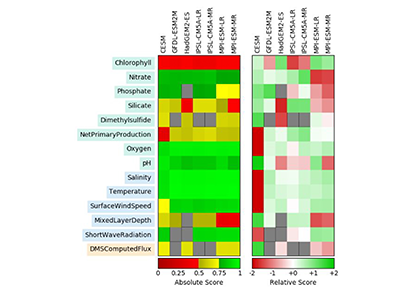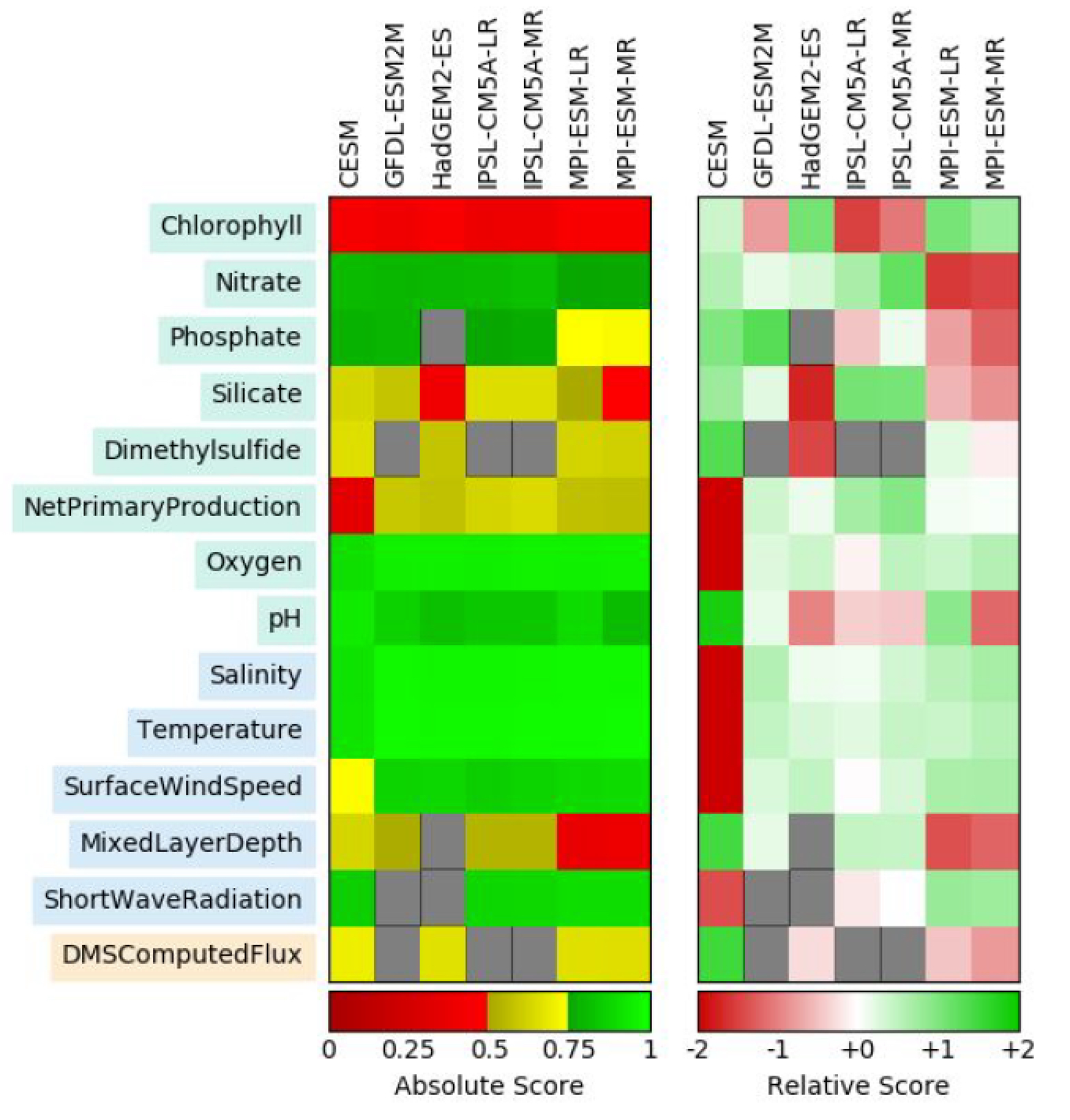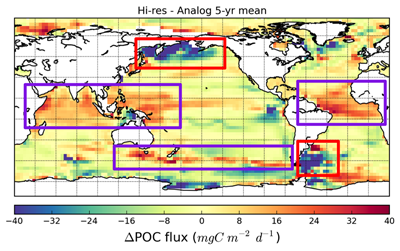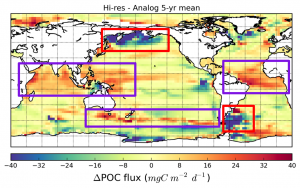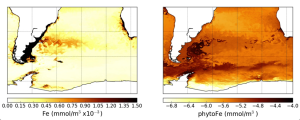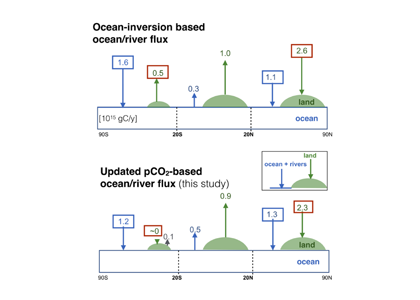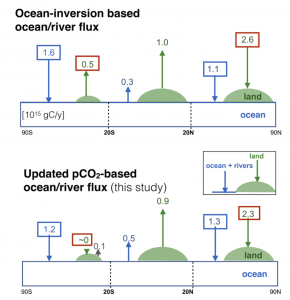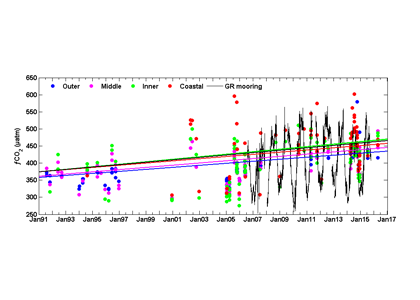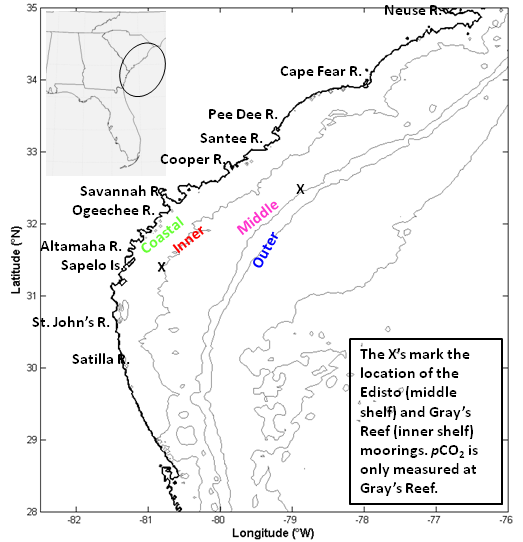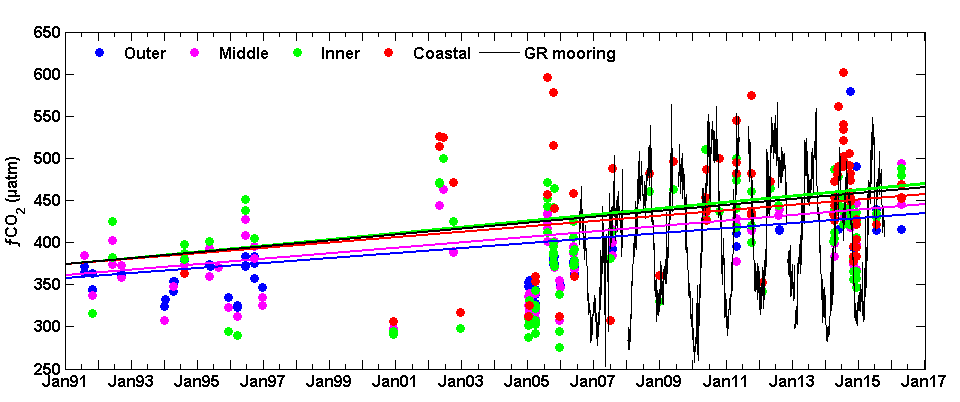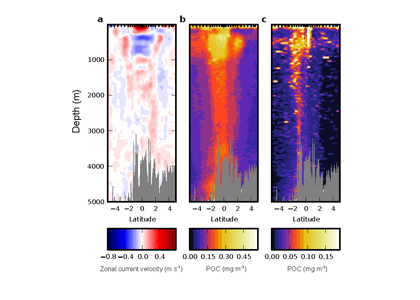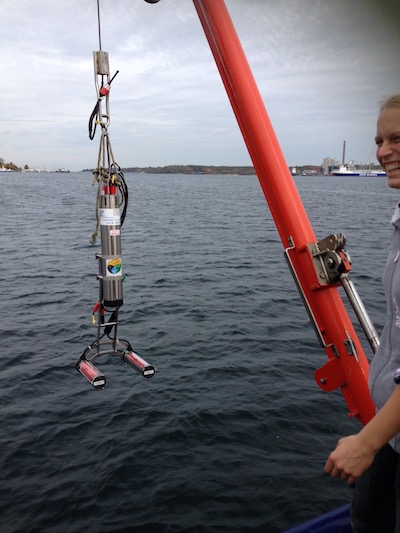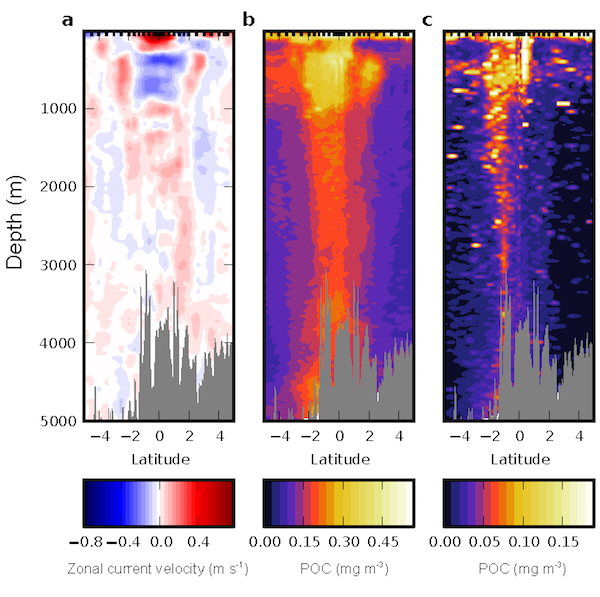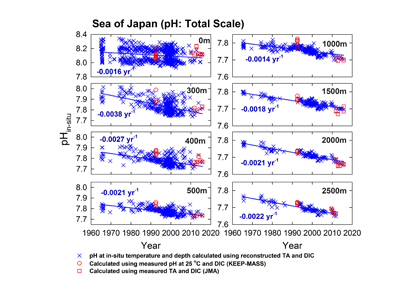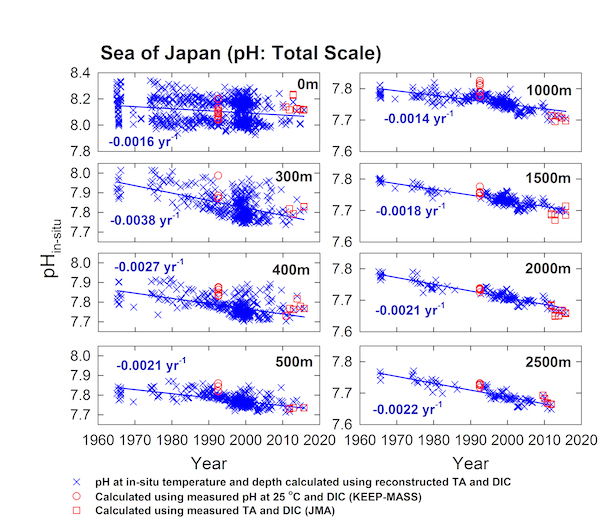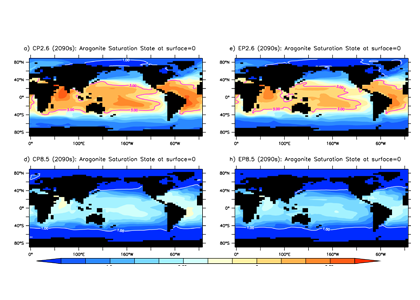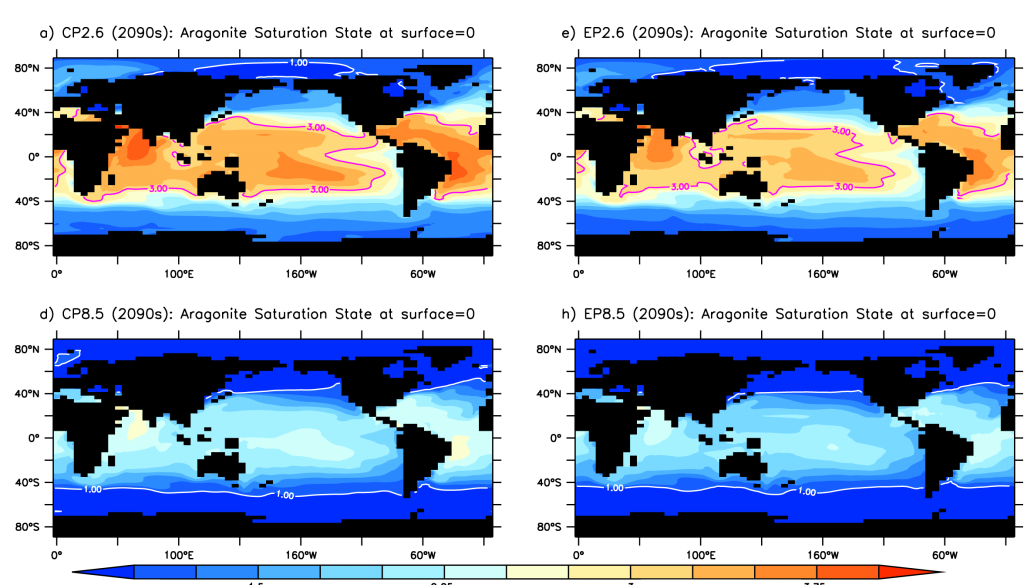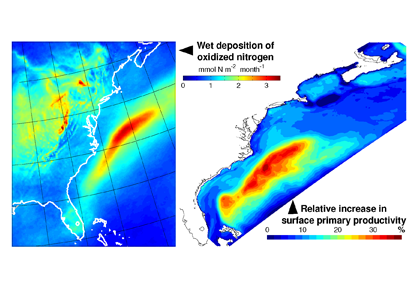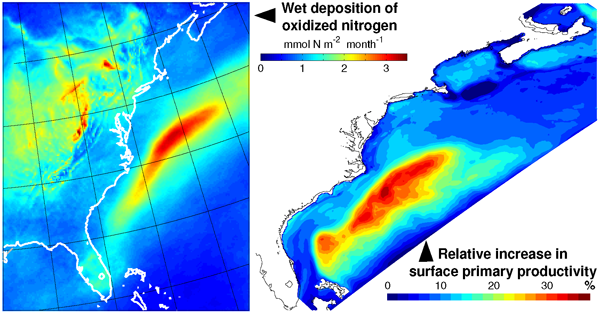According to Martin’s iron hypothesis, input of aeolian dust into the ocean environment temporarily relieves iron limitation that suppresses primary productivity. Asian dust events that originate in the Taklimakan and Gobi Deserts occur primarily in the spring and represent the second largest global source of dust to the oceans. The western North Pacific, where productivity is co-limited by nitrogen and iron, is located directly downwind of these source regions and is therefore an ideal location for determining the response of open water primary productivity to these dust input events.
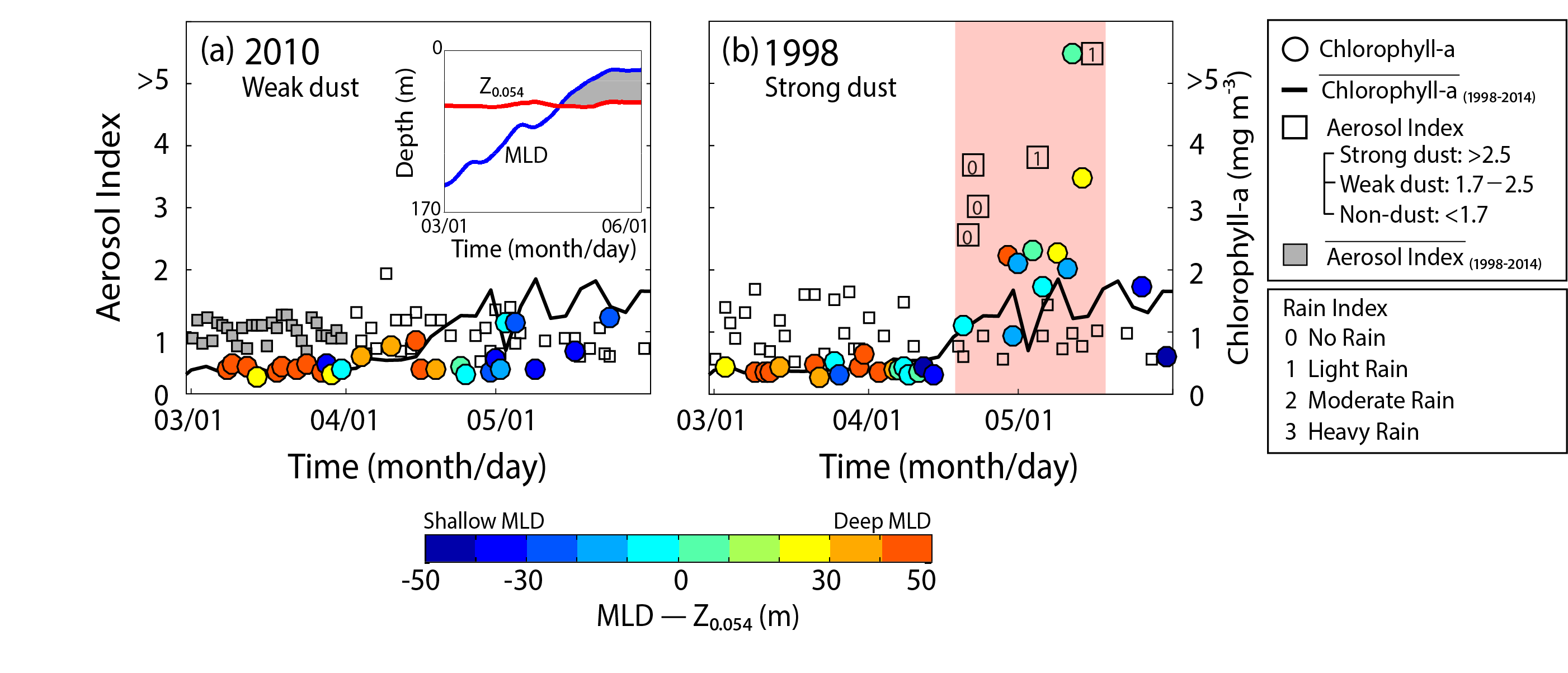
Figure 1. Daily aerosol index values (black squares) and chlorophyll-a concentrations (mg m-3, circles) during the spring (a) 2010 (weak dust event), (b) 1998 (strong dust event) in the western North Pacific. Color scale represents difference between mixed layer depth (MLD) and isolume depth (Z0.054) that indicates conditions for typical spring blooms; water column structures of MLD and isolume were identical in the spring of 1998 and 2010. Dramatic increases in chlorophyll-a (pink shading, maximum of 5.3 mg m-3) occurred in spring 1998 with a lag time of ~10 days after the strong dust event (aerosol index >2.5) on approximately April 20 compared to constant chlorophyll-a values (<2 mg m-3) in the spring of 2010.
A recent study in Geophysical Research Letters included an analysis of the spatial dynamics of spring Asian dust events, from the source regions to the western North Pacific, and their impacts on ocean primary productivity from 1998 to 2014 (except for 2002–2004) using long-term satellite observations (daily aerosol index data and chlorophyll-a). Geographical aerosol index distributions revealed three different transport pathways supported by the westerly wind system: 1) Dust moving predominantly over the Siberian continent (>50°N); 2) Dust passing across the northern East/Japan Sea (40°N‒50°N); and 3) Dust moving over the entire East/Japan Sea (35°N‒55°N). The authors observed that strong dust events could increase ocean primary productivity by more than 70% (>2-fold increase in chlorophyll-a concentrations, Figure 1) compared to weak/non-dust conditions. This result suggests that spring Asian dust events, though episodic, may play a significant role in driving the biological pump, thus sequestering atmospheric CO2 in the western North Pacific.
Another recent study reported that anthropogenic nitrogen deposition in the western North Pacific has significantly increased over the last three decades (i.e. relieving nitrogen limitation), whereas this study indicated a recent decreasing trend in the frequency of spring Asian dust events (i.e. enhancing iron limitation). Further investigation is required to fully understand the effects of contrasting behavior of iron (i.e., decreasing trend) and nitrogen (i.e., increasing trend) inputs on the ocean primary productivity in the western North Pacific, paying attention on how the marine ecosystem and biogeochemistry will respond to the changes.
Authors:
Joo-Eun Yoon (Incheon National University)
Il-Nam Kim (Incheon National University)
Alison M. Macdonald (Woods Hole Oceanographic Institution)

